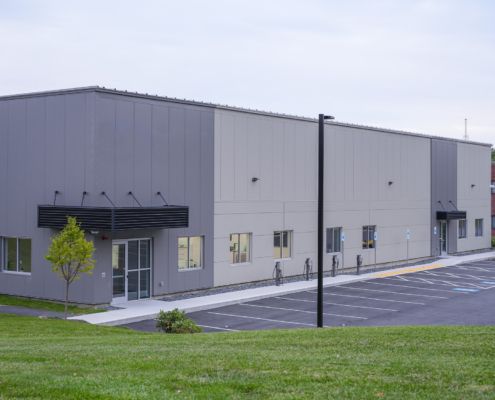 https://www.hokansoninc.com/wp-content/uploads/2025/01/How-to-Foster-Collaborative-Owner-Tenant-Relationships.jpg
1250
2000
AbstraktMarketing
/wp-content/uploads/2022/10/Hokanson-Logo-Color-SVG-V2.svg
AbstraktMarketing2025-01-09 08:39:222025-04-15 15:32:28How to Foster Collaborative Owner-Tenant Relationships
https://www.hokansoninc.com/wp-content/uploads/2025/01/How-to-Foster-Collaborative-Owner-Tenant-Relationships.jpg
1250
2000
AbstraktMarketing
/wp-content/uploads/2022/10/Hokanson-Logo-Color-SVG-V2.svg
AbstraktMarketing2025-01-09 08:39:222025-04-15 15:32:28How to Foster Collaborative Owner-Tenant RelationshipsThe Process of Rental Income Forecasting
Accurate rental income forecasting is a vital tool for real estate investors looking to maximize returns and plan for long-term success. Understanding the steps involved in this process allows investors to make informed decisions, anticipate potential challenges, and adjust strategies based on market conditions.
In this blog, we’ll walk through the step-by-step process of rental income forecasting, providing insights on how to project future earnings and ensure your investments stay profitable.
Why Rental Income Forecasting Is Crucial for Real Estate Investors
Rental income forecasting is crucial for real estate investors as it provides a detailed projection of future income streams from rental properties. By accurately predicting rental income, investors can make informed decisions about property acquisitions, pricing strategies, and investment opportunities.
This forecasting helps plan for future expenses, identify potential cash flow issues, and set realistic financial goals. Moreover, it enables investors to optimize property returns by adjusting strategies based on projected income and market conditions.
Effective rental income forecasting is a key component in managing risk, maximizing profitability, and ensuring long-term success in real estate investments.
The Step-By-Step Process of Rental Income Forecasting
Rental income forecasting is essential for real estate investors seeking to maximize their returns and manage properties effectively. It involves analyzing historical data, projecting future performance, and accounting for various market and property-specific factors. Below is a step-by-step breakdown of how to approach rental income forecasting for a commercial property.
1. Collect Historical Data
The first step in rental income forecasting is gathering relevant historical data. This includes analyzing past rental rates, occupancy rates, and lease terms. By examining this data, investors can identify patterns and trends that may influence future income. Accurate historical data sets the foundation for understanding how your property has performed over time.
2. Analyze Market Conditions
Understanding the broader market conditions is crucial. Analyze current market trends, economic factors, and competition in similar areas. This analysis helps in predicting how external factors may impact your rental property. Changes in local employment rates, new developments, and overall economic health should be considered to provide a clear picture of what lies ahead.
3. Project Future Occupancy Rates
It’s important to project future occupancy rates to ensure an accurate forecast. This involves considering tenant retention, possible vacancy periods, and the likelihood of securing new tenants. Estimating occupancy rates is essential for predicting cash flow, as even short vacancy periods can significantly impact revenue.
4. Estimate Future Rental Rates
Estimating future rental rates is critical to understanding the potential profitability of your property. Look at market trends, comparable rental properties, and economic indicators to forecast future rental income. Factors like inflation, demand for property in your area, and market saturation all play a role in determining how much you can charge.
5. Incorporate Lease Terms and Rent Escalations
Don’t overlook the impact of lease terms and rent escalations when forecasting rental income. Lease renewals, expiration dates, and any escalation clauses can affect your income projections. Be sure to account for these factors when determining your long-term financial outlook, especially if rent increases are scheduled during the lease period.
6. Account for Operating Expenses
Forecasting rental income isn’t just about revenue; you must also account for operating expenses such as maintenance, property management fees, property taxes, and insurance. These expenses can vary depending on the property’s condition, age, and location, so be thorough when estimating costs to maintain an accurate forecast.
7. Create a Forecasting Model
Once you’ve gathered all the necessary data, it’s time to create a forecasting model. This should include detailed income and expense projections to calculate your net operating income. The model gives you a clearer understanding of expected profits and helps you make informed decisions about future investments.
8. Review and Adjust Regularly
The rental income forecasting process doesn’t end once you’ve created a model. Regularly review and adjust your forecast based on new data and trends. Monitoring key performance indicators and identifying variances can help you refine your projections and stay ahead of any changes in the market.
Learn more about the ins and outs of rental income forecasting by diving into our comprehensive guide.
How to Improve Your Rental Income Forecasting Accuracy
Improving the accuracy of your rental income forecasting is essential for maximizing returns and minimizing risks. Accurate rental income forecasts help investors make well-informed decisions, plan for expenses, and adjust to market conditions effectively. Here are some strategies to try that can enhance the precision of your rental income forecasts:
- Conduct Regular Market Analyses: Stay up-to-date with current market trends, rental rates, and economic conditions to adjust forecasts according to the latest data.
- Maintain Detailed Property Records: Keep comprehensive records of rental rates, maintenance costs, tenant turnover, and lease agreements to ensure accurate historical data for forecasting.
- Use Advanced Modeling Techniques: Incorporate sophisticated financial modeling tools and software to generate more accurate projections based on various scenarios and factors.
- Track Economic Indicators: Monitor key economic metrics, such as inflation, employment rates, and interest rates, that can impact rental demand and property performance.
- Review and Adjust Forecasts Regularly: Reassess your rental income forecasts periodically to account for new data, market shifts, or unexpected changes in tenant behavior.
- Work With Property Management Professionals: Collaborate with experienced property managers who can provide insights into tenant retention, maintenance costs, and other operational details that affect income forecasts.
- Incorporate Rent Escalation Clauses: Ensure that your forecasts consider lease agreements with rent escalation clauses, which can impact future rental income growth.
By following these tips, you can significantly enhance the accuracy of your rental income forecasting, leading to better financial planning and investment performance. For accurate and reliable rental income forecasting, turn to the experts at Hokanson Companies.
Develop Your Rental Income Forecasting Framework With Hokanson Companies
Since 1938, Hokanson Companies has been a trusted industry expert, delivering exceptional services to real estate investors in the Midwest and beyond. With our deep expertise and comprehensive understanding of the market, we provide reliable rental income forecasting that helps you make informed investment decisions.
If you’re looking for a partner that offers accurate financial insight and decades of experience, Hokanson Companies is here to guide you. Contact us today, and let us help you build a strong framework for your property investments.









